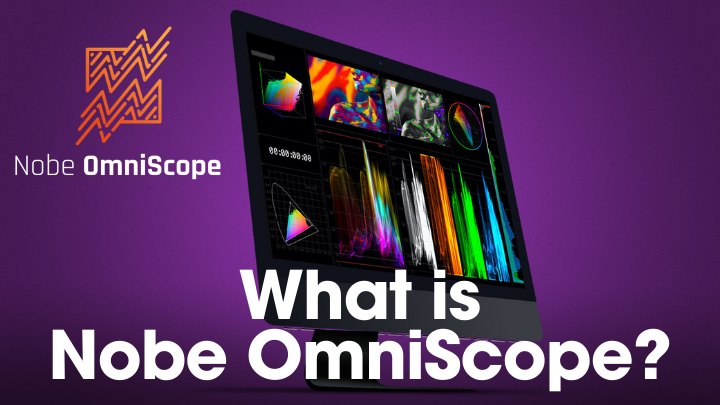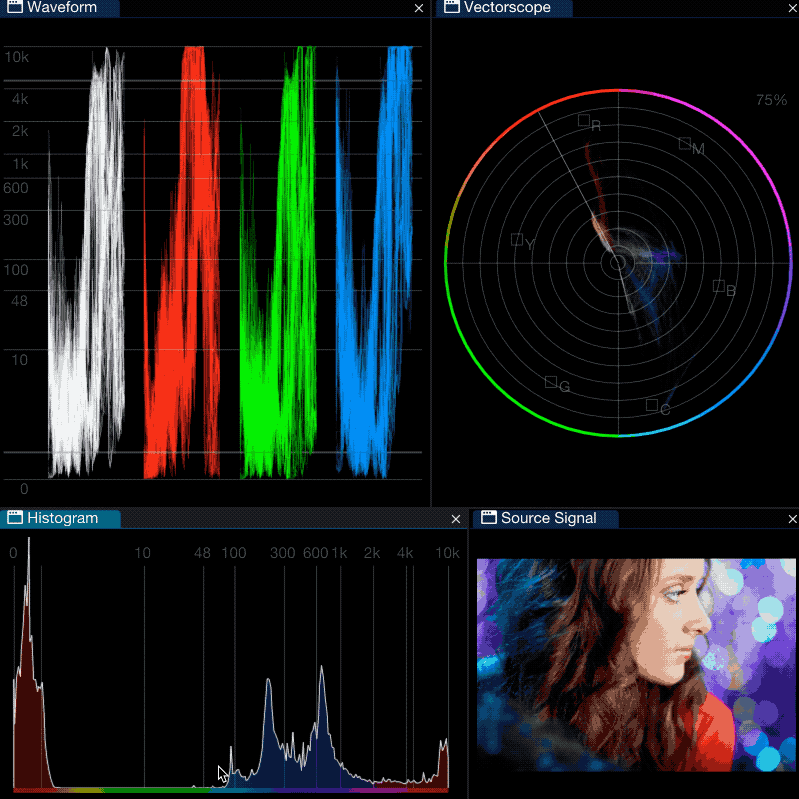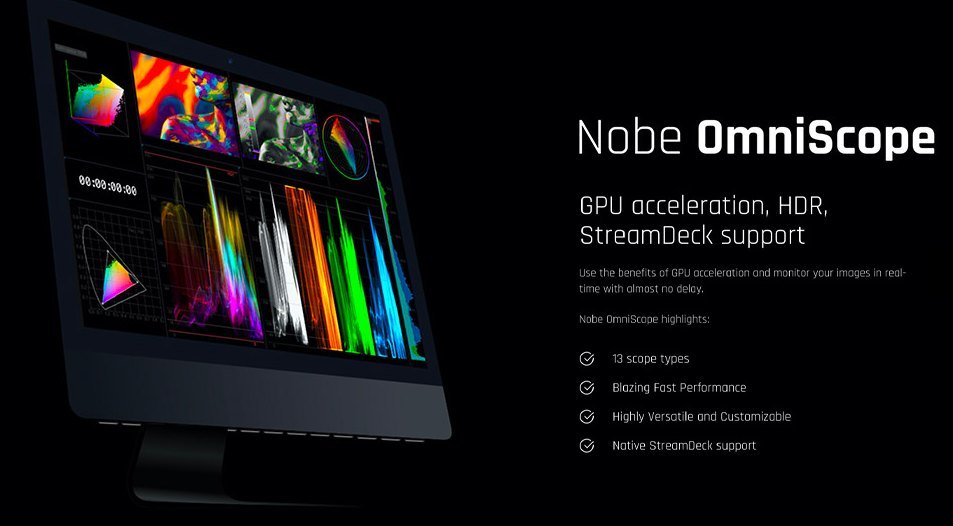
‘Time in Pixels’ stands at the intersection of technology and visual storytelling. It’s a company dedicated to enhancing the digital workflow of colorists, digital imaging technicians, editors and other professional creatives with innovative video scope software. Our passion is to solve the practical challenges faced by professionals in post-production, and our main offering, Nobe OmniScope, reflects this commitment. Learn about What is Nobe OmniScope in detail from Tom Huczek himself.
Born from a personal need for better tools in filmmaking and photography, Time in Pixels has grown into a trusted name within the industry, recognized for pushing the boundaries of video scope functionality.
Visit our official website to learn more about our solutions and how they can support your creative process, helping you manage colors and details with precision and clarity.
Welcome aboard Tom. Please share your professional journey.
My professional journey has been a tale of two passions converging. I began as a software developer in an entirely different field, immersing myself in the intricacies of programming and system design. owever, outside of work, I found a creative outlet in photography and filmmaking. What started as a hobby soon blossomed into a full-fledged passion, and I found myself drawn to the technical challenges and artistic expression found in visual storytelling.
As my expertise in software development deepened, I started crafting tools to address the frustrations and limitations I encountered in my own creative projects. These tools were initially meant just for my use, born out of a need to streamline my workflow and enhance my capabilities as a filmmaker and photographer. Over time, as I shared my developments with peers and received enthusiastic feedback, it became clear that the solutions I was creating had the potential to benefit a wider audience.
As the founder of Time in Pixels, which core problems of the VFX and Filmmaking pipeline are you solving?
At Time in Pixels, we’re primarily focused on improving the color grading and correction segment of the VFX and filmmaking pipeline. We aim to solve issues related to the lack of flexible and powerful video scope tools that can keep pace with the ever-evolving technology and standards in the film industry.
By providing advanced, GPU-accelerated tools that offer precision and speed, we help colorists and digital imaging technicians (DITs) maintain the artistic integrity of their work while enhancing efficiency and productivity.
Before going deep dive into Nobe OmniScope, can you please explain in detail about the domain of video scope software.
Video scope software is essential for colorists and video professionals who need to ensure their footage meets certain technical standards and aesthetic goals. These tools provide visual representations of image attributes like luminance, color balance, and signal quality.
This software helps in identifying and correcting issues such as color casts, exposure problems, and illegal signal levels. The scopes, such as waveforms, vectorscopes, and histograms, are integral to making precise adjustments during color grading and ensuring that the final output is both technically compliant and visually compelling.
What is Nobe OmniScope?
OmniScope is the video industry’s most powerful and flexible scope application for color correction, video editing, and signal monitoring. This is a software product that can replace physical hardware based
devices. OmniScope is a standalone application that runs on macOS and Windows and we also have plugins for Resolve (OFX) and Adobe Premiere and After Effects.
This flexibility allows OmniScope to complement almost any post-production application including Blackmagic Design’s DaVinCi Resolve, Assimilate Scratch, Baselight, Avid, Adobe, Final Cut and more.

What are the key features of Nobe OmniScope that differentiate it from other products in the domain of video scope software?
OmniScope is known for being extremely powerful and customizable – giving colorists ultimate control over almost every aspect of the interface, workspace, layouts and more. It includes 18 scope types that
are optimized for cutting edge post workflows – with support for 12 bit signals, HDR, Dolby Vision and more. The software is optimized for modern GPUs and is fast and responsive.
It’s really packed with specialized features that are not included in the native scope tools found in most host applications, including QC tools and an OCIO color management workflow. Lastly – OmniScope is known for extremely fast development cycles to keep up with feature requests and updates.
What are the new features of Nobe OmniScope?
There are over 70 new features in this new version. The reworked color processing pipeline and new OCIO update make OmniScope even more robust for critical color workflows. There is a new QC timeline
that detects signal issues, HDR statistics MaxFALL & MaxCLL, blanking errors, HDR Gamut status and more. A new multi-input support brings massive time savings when switching between video signals and devices.
Additionally, OmniScope can now be integrated with Unreal Engine and Unity for Virtual Production monitoring via GPU memory sharing (with Syphon & Spout support).
How do you cater the niche community of Colorists and Digital Imaging Technicians, both online and offline ways?
Our Discord community has become an important place for users to share information, log feature requests or simply ask questions. The color community is generally vocal about what they want from
hardware and software. These are pros who spend 8-10 hrs a day or more working with the equipment, so when it does not work or a new format roles out, being available and responsive is key.
We are also active in engaging with well known YouTube trainers and educational partners (like Mixing Light) to ensure the community is kept up to date.
What are your thoughts on the role of Artificial Intelligence in the industry of video scope software?
I strongly believe that AI will be a transformative force in automating and enhancing the QC processes.
AI algorithms can be trained to recognize a vast array of signal issues, from simple exposure and color balance problems to more complex issues like noise patterns or compression artifacts. This ability to quickly and reliably identify potential flaws not only speeds up the QC process but also adds a layer of consistency and precision that is difficult to achieve with manual inspection alone.
What are the biggest challenges in developing and maintaining of it?
The primary challenges in developing and maintaining video scope software like Nobe OmniScope revolve around ensuring high performance across diverse hardware configurations, keeping up with rapidly evolving video standards, and integrating complex new features without compromising the intuitive user experience our clients have come to expect.
How do you ensure that it is compatible with the other software packages?
There are 2 ways of achieving that:
- Working closely with other software vendors
- Implementing industry-standard protocols like NDI or Spout / Syphon.
We try to do both.
How do you measure the success of your video scope software?
Customer satisfaction is always the number one priority. Knowing that the color community relies on our tools every day while delivering amazing films and television content is the ultimate success. We achieve this by putting a high importance on technical support, implementing feature requests and constantly adapting to state of the art video standards.

Can you give me some examples of how OmniScope has been used in real-world projects, and what impact it had on the final results?
Sure, OmniScope is used by professional colorists and DIT’s all over the world. One project that comes to mind is James Cameron’s last blockbuster, Avatar: The Way of the Water. Tashi Trieu is a Los Angeles based finishing artist and colorist who uses OmniScope and served as the DI Colourist on this film. Like many of our customers, Tashi is quite active as a beta tester and regularly contributes feature requests and suggestions for the OmniScope product roadmap.
You can find a case study here.
Can your share some testimonies of professional Colorists and DITs (Digital Imaging Technicians) who used Nobe OmniScope?
We are thankful that so many talented artists in the color grading community have adopted OmniScope in their workflow. Here are a few customer testimonies:
Robbie Carman – Colorist, Educator & Presenter
Video scopes are an essential tool in any color critical workflow because they tell you what’s really going on with the signal. OmniScope provides all the scopes you’ll need to properly evaluate any project with a range of options available for each so you can be sure to see every detail.
One great thing about Omniscope is the pace of development and communication with users. if a user needs something, developer Tom Huczek integrates their ideas in a smart way. He is also great at coming up with small new features that really add to the overall experience.
Daniel Stonehouse – Senior Colourist, Co-founder, and owner Crayon
It’s been a long while since I have found a piece of software that I am excited about as I am with Nobe Omniscope. The richness of the toolset and opportunities for customisation are unparalleled. And the pace of development meant that it became an essential part of my workflow!
Daria Fisssoun, Colorist and Resolve Trainer
I love how interactive the Omniscope tools are – my favorite action is to drag within the viewer to reveal isolated ranges in the vectorscopes and histograms. Modifier keys like Alt/Opt and Shift further expand the functionality of each tool by allowing me to drop pins and masks around areas of interest. It makes secondary grading such a breeze!
How do you see the future of video scope software and the role Nobe OmniScope in it?
The future of video scope software is heading towards even more integration with real-time video editing platforms, deeper analytics and HDR workflows being more and more popular. Nobe OmniScope is positioned at the forefront, ready to embrace these advancements.
We aim to continue providing state-of-the-art tools that cater to the evolving needs of creatives and engineers, incorporating emerging technologies to enhance our offerings.
![]()
How do you plan to position your company to succeed in this changing landscape?
We plan to continue investing in research and development, listening to our user community, and staying agile enough to adapt to the changing needs of the industry. We’ll also maintain our focus on building robust educational resources and community engagement, ensuring that professionals not only have access to our tools but also the knowledge to use them effectively.
What are your thoughts on the role of open source software in this industry?
Open source software plays a critical role in the film and visual effects industry, acting as the backbone for much of the innovation and many of the tools we use daily. One of the cornerstones of our work at Time in Pixels, especially within OmniScope, is the OpenColorIO project. It’s an exemplary open source solution that has fundamentally changed how complex color management tasks can be approached in software development for filmmaking and broadcast.
OpenColorIO, being an industry-standard color management framework, enables us to implement advanced color features in OmniScope that are robust, precise, and versatile. This open source project allows small and medium-sized companies like ours to access high-quality, professional-grade color management technology without the need to develop a proprietary solution from scratch, which would be prohibitively expensive and time-consuming.
How do you encourage innovation within your company?
The innovation is encouraged by fostering a culture of continuous learning, open communication, and encouraging team members to challenge the status quo.
We allocate time for experimentation with new technologies and ideas, and we also encourage collaboration across different disciplines to bring in fresh perspectives
